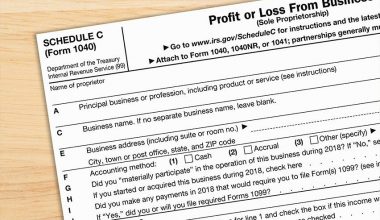How to start payroll for a small business, is a question that runs through the mind of every entrepreneur. Payroll is the process of paying a business’s employees, which includes keeping track of hours worked, calculating pay, and disbursing funds to employees via direct deposit or check.
Businesses must, however, conduct accounting activities in order to record payroll, withheld taxes, bonuses, overtime compensation, sick time, and vacation pay. Companies must set aside and record the amount of Medicare, Social Security, and unemployment taxes that must be paid to the government.
Many businesses use payroll software to keep track of their employees. An API is used to input the employee’s hours, and their compensation is processed and sent to their bank accounts.
Payroll services are outsourced by many medium and big businesses to simplify the process. Employers keep track of how many hours each employee works and report this to the payroll service. The gross amount payable to the employee is calculated by the payroll service on payday based on the number of hours or weeks worked during the pay period and the pay rate. The service deducts taxes and other withholdings from employee earnings before paying them.
Nonetheless, this guide on how to start payroll for small businesses in 2023 will help you approach this exciting but intimidating process with more confidence, allowing you to hire the help you need in the end.
Understanding Payroll
Payroll is the compensation that a company owes to its employees for a specific period of time or on a specific day. It is typically administered by a company’s accounting or human resources departments. Payroll for a small firm might be handled by the owner or an associate.
Payroll processing, employee benefits, insurance, and accounting functions like tax withholding are increasingly being outsourced to specialist organizations.
Payrolling your company on your own is less expensive, but it is time-consuming and prone to errors.
If you’re good with numbers, you might be able to pay your employees yourself. However, given the potential for payroll errors (and the resulting fines), make sure you’re entirely satisfied with what you need to do before diving in.
How to Start Payroll
- Obtain an Employer Identification Number (EIN)
- Check Whether You Need State/Local IDs
- Independent Contractor or Employee
- Take Care of Employee Paperwork
- Decide on a Pay Period
- Carefully Document Your Employee Compensation Terms
- Choosing a Payroll System
- Running Payroll
- Get Record-Keeping
- Report Payroll Taxes
#1. Obtain an Employer Identification Number (EIN)
You must obtain an employer identification number (EIN) from the IRS before recruiting staff. The EIN is also known as the Employer Tax ID or Form SS-4. The EIN is required for filing taxes and other papers with the Internal Revenue Service. Furthermore, when submitting information about your employees to state entities, the EIN is required. You can apply for an EIN online or by contacting the Internal Revenue Service directly.
#2. Check Whether You Need State/Local IDs
In order to handle taxes, some state and local governments need enterprises to obtain identification numbers.
#3. Independent Contractor or Employee
Recognize the Difference. Make sure you understand the difference between an independent contractor and an employee. The distinction between the two isn’t always clear in legal terms, and it has an impact on how you withhold income taxes, pay Social Security and Medicare taxes, and pay unemployment taxes.
#4. Take Care of Employee Paperwork
Form W-4, Federal Income Tax Withholding, is required for new workers. Your employee must fill out the form and return it to you so that you can deduct the appropriate amount of federal income tax from their paycheck.
#5. Decide on a Pay Period
You may well have a manual process in place, but setting up a pay period (monthly or bi-monthly) is occasionally dictated by state law, with bi-monthly payments being the most common. Even if your employee does not work the entire period, the IRS compels you to withhold income tax for that time period.
#6. Carefully Document Your Employee Compensation Terms
When setting up payroll, think about how you’ll handle paid time off (which isn’t required by law but is supplied by most businesses), how you’ll track employee hours, whether and how you’ll pay over time, and other business considerations. Other employee compensation and business expenses, such as health plan premiums and retirement payments, must also be taken from employee paychecks and paid to the proper organizations.
#7. Choosing a Payroll System
Payroll administration necessitates a high level of precision and attention to detail, so it’s worth conducting some research to learn about your possibilities. Begin by asking other business owners whatever approach they use and if they have any suggestions for setting up and managing payroll. In most cases, your payroll management options are in-house or outsourced. You, as the employer, are responsible for reporting and paying all payroll taxes, regardless of which option you choose.
#8. Running Payroll
You can start running payroll once you’ve gathered all of your paperwork and information. You can either enter the information yourself or give it to your accountant, depending on whatever payroll system you use.
#9. Get Record Keeping
Employers are required by federal and state legislation to preserve certain records for specific periods of time. W-4 forms (on which employees specify their tax withholding status) must, for example, be kept on file for all active employees as well as for three years after an employee has been discharged. W-2s, copies of filed tax forms, and the dates and amounts of all tax deposits should all be kept.
#10. Report Payroll Taxes
On a quarterly or annual basis, you must submit multiple payroll tax reports to the appropriate authorities. Visit the IRS’s Employer’s Tax Guide for more information, which gives clear guidance on all federal tax filing obligations. For detailed tax filing requirements for employers, contact your state’s tax department.
How to start Payroll for Small Businesses
Here are steps on how to start payroll for a small business:
Review the U.S. Department of Labor website
Most firms in the United States are subject to specific rules. To mention a few, these restrictions include the minimum wage law, the Family and Medical Leave Act, and overtime rules.
Review the Topics area of the US Department of Labor website to begin setting up your small business payroll. Then, go to the DOL’s laws FirstStep Poster Advisor section to figure out which posters you’ll need to display to stay in compliance with federal employment requirements.
Review the department of labor website for your state.
While the federal employment law is regulated by the United States Department of Labor, each state has its own set of labor laws. When setting up payroll for your small business, you must be aware of both federal and state rules.
What if the information on your state’s labor department’s website differs from that on the US Department of Labor’s website? In general, the law favors the employee, therefore you should follow the guidelines that benefit him or her the greatest. For example, once an employee works more than 40 hours a week, federal law mandates that overtime be paid. However, some jurisdictions require overtime pay based on the number of hours worked in a day.
When in doubt, consult your accountant or a labor attorney who is familiar with your state’s laws. This will not only keep you out of trouble with the law but will also ensure that your employees are treated fairly, resulting in a happier workforce.
Determine your payroll schedule
Payroll is usually done weekly, bimonthly, or semimonthly in most businesses. Choose a paycheck schedule that works best for you. When deciding how often you want to pay your staff, keep your company’s cash flow in mind. Paying employees on time is governed by tight restrictions, and while you can vary your payroll schedule, you shouldn’t do it frequently.
Keep in mind that your state’s labor laws may specify the minimum frequency of your payroll schedule, so double-check yours against the requirements on your state’s labor department’s website.
Write your employee handbook
It’s time to write your employee handbook now that you know which regulations apply to payroll in your state. Don’t worry if the prospect of writing anything makes you uncomfortable. You can use a variety of internet resources to help you develop your employee handbook, or you can hire a human resources specialist to do it for you.
After you’ve finished writing your employee handbook, I strongly advise you to have it reviewed by an attorney who specializes in employment law in your state. They’ll double-check that your handbook doesn’t include any material that may be construed as a contract between you and your employees.
Before you decide on how to start payroll for a small business, also ensure you have correctly understood the laws pertaining to payroll and employment issues in your state.
Apply for Your Federal Employer Identification Number (FEIN or EIN).
For tax purposes, many sole owners utilize their Social Security Number. However, you must utilize a federal employer identification number, sometimes known as a FEIN or EIN, for employment purposes. Your EIN is the number you’ll use on all business tax filings and documents once you’ve got it. As a result, many accounting professionals strongly advise business owners to obtain an EIN as soon as possible after launching their company.
Getting a FEIN, if you don’t already have one, is simple. You can apply for your EIN online at the IRS website and receive it right away.
Apply for your state withholding and unemployment insurance accounts
You may be obliged to withhold state income taxes and contribute to your state’s unemployment insurance fund, depending on your state. Local withholding tax regulations exist in several states as well.
On the websites of your state’s tax commission and unemployment security commission, you can frequently obtain information on your job situation on how to start payroll for a small business
Enter your payroll schedule and tax filing due dates in your calendar
You must ensure that you meet all deadlines now that you have decided on your payroll schedule and applied for your FEIN, state withholding, and unemployment insurance accounts.
Begin by marking your calendar with your payroll dates. Then, input the due dates for your payroll tax filings. Keep in mind that remitting taxes and filing information returns may have separate due dates. Furthermore, state deadlines may differ from federal deadlines.
Decide who will administer your payroll
Will you be handling payroll in-house or through a third-party payroll service? Both options have pros and cons.
When you handle payroll in-house, you have a little more leeway in terms of when you may process payroll. Payroll service providers frequently request three to five-day lead waits and charge a rush fee if you don’t submit payroll data by their deadline. Payroll service providers, on the other hand, frequently assume full responsibility for the timely submission of tax payments and returns, which is appealing to the busy small business owner.
Hire your first employee
You’ve got all of your required tax ID numbers, figured out your payroll schedule, and set up your payroll system. It’s now time to bring on your first employee.
Collect some information from the perfect candidate once you’ve located and hired them so that they can be properly set up in your payroll system.
How to do Payroll Manually
A manual payroll system necessitates the completion of the whole payroll procedure by hand. You can acquire standard timesheets for documentation and ask your staff to fill them out if you opt to manage your own payroll. After you’ve finished the time cards, you may calculate the proper wages and taxes, and then handwrite checks to your employees.
It’s important to remember that manual payroll processing entails a lot of procedures that can take longer than you expect. This is especially true for businesses that fall somewhere in the middle of the small and medium-sized spectrum. The more staff you have, the more difficult it is to conduct payroll manually.
Use the steps below to learn how to conduct payroll manually if you want to save money and put your brain to work.
- Gather your tax information
- Have your employees fill out a Form W-4
- Determine a payroll schedule
- Calculate gross pay and withhold income taxes
- Pay payroll taxes
- File and report your payroll
- Keep well-maintained payroll records
How to start payroll for a small business: Payroll for One Employee
You’ll need the following items to pay your single employee, whether you do it yourself or hire a payroll service provider:
- Employer identification number (EIN)
- State and local tax ID numbers, if applicable
- State unemployment ID number
- Employee’s I-9 and W-4 forms
- Employee’s state withholding allowance certificate
- Department of Labor records
- Defined pay periods
How Do I Start Payroll for Small Business?
Here are steps on how to start payroll for a small business
- Obtain an EIN. …
- Figure Out If You Have To Have State Or Local IDs. …
- Know The Difference Between Independent Contractor and Employee. …
- Complete Employee Paperwork. …
- Select a Pay Period. …
- Choose a Payroll System For Your Small Business. …
- Begin Running Payroll. …
- Report Payroll Taxes
Can You Do Payroll Yourself?
Payroll by hand is the sole free payroll processing option. Service fees are charged by payroll software, accountants, and bookkeepers. If you don’t have the funds to pay for a payroll service, you can save money by doing it yourself.
How Do Small Business Owners Pay Themselves?
The majority of small business entrepreneurs pay themselves through an owner’s draw. Owners of LLCs, sole proprietorships, and partnerships are considered self-employed by the IRS, and as a result, they are not compensated through normal wages. This is where the owner’s draw comes into play…. Partnerships, sole proprietorships, and limited liability companies.
How Much Do Payroll Services Cost?
As you can see, a variety of factors influence the total cost of payroll processing. While the basic rule of thumb is that it will cost roughly $150-$200 per employee per year, your overall cost will be determined by the scope of your vendor’s participation.
Conclusion
It makes no difference how many workers you have. Setting up a payroll system that streamlines your ability to remain on top of your employer responsibilities is critical. Additionally, it saves you time and protects you from costly IRS penalties
We also recommend
- Payroll Software for Small Business: 5 Best Free Payroll Software
- Payroll Report: Detailed Guide to Payroll Report
- Benefits of Accounting Process Automation for Business
- Payroll Software: 10 Best Payroll Software for Businesses






